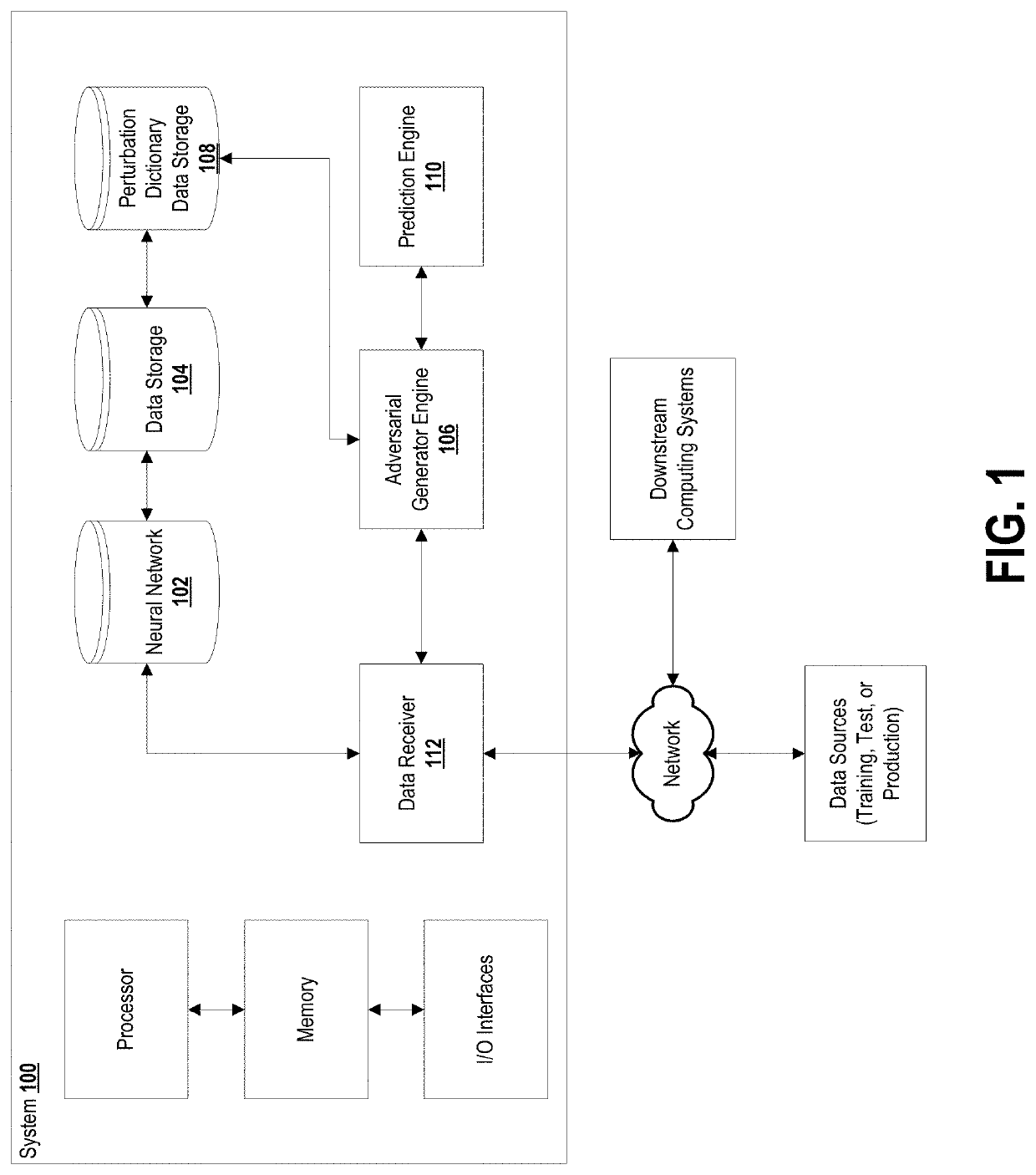System and method for max-margin adversarial training
a technology of adversarial training and system, applied in the field of machine learning, can solve the problems of significant drop in the prediction accuracy of an otherwise accurate network, shift of classification, and special difficulty in defending against adversarial attacks, and achieve the effects of improving resistance, reducing the prediction accuracy of an otherwise accurate neural network, and high robustness
- Summary
- Abstract
- Description
- Claims
- Application Information
AI Technical Summary
Benefits of technology
Problems solved by technology
Method used
Image
Examples
Embodiment Construction
[0045]Approaches and mechanisms are described that are directed to improving a level of robustness (e.g., improved resistance) against adversarial examples of a neural network.
[0046]Improved adversarial examples are generated for training a neural network such that the neural network may be able to generate correct outputs despite some level of adversarial attack being present in the test set / production data set. Adversarial examples are generated whose margin (the distance from the data point to a decision boundary) is improved (in some embodiments, maximized).
[0047]This is an improvement over other approaches where, for example, the distance when used for generating adversarial examples is an arbitrarily selected distance. Adversarial attacks are especially difficult to defend against as it is difficult to know when training or designing a neural network what aspects are used in generating the future adversarial examples.
[0048]Applicants have studied adversarial robustness of neur...
PUM
 Login to View More
Login to View More Abstract
Description
Claims
Application Information
 Login to View More
Login to View More - R&D
- Intellectual Property
- Life Sciences
- Materials
- Tech Scout
- Unparalleled Data Quality
- Higher Quality Content
- 60% Fewer Hallucinations
Browse by: Latest US Patents, China's latest patents, Technical Efficacy Thesaurus, Application Domain, Technology Topic, Popular Technical Reports.
© 2025 PatSnap. All rights reserved.Legal|Privacy policy|Modern Slavery Act Transparency Statement|Sitemap|About US| Contact US: help@patsnap.com



